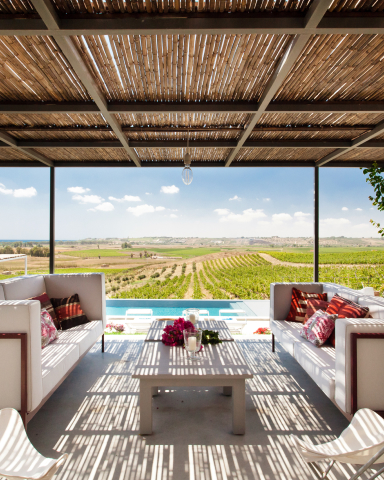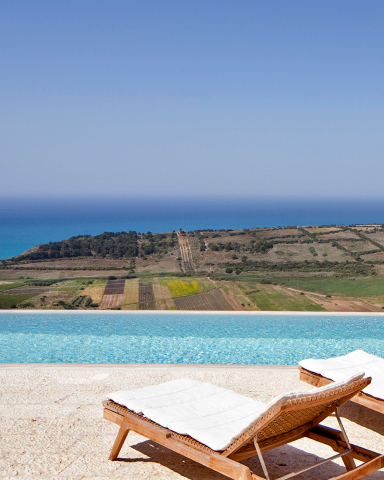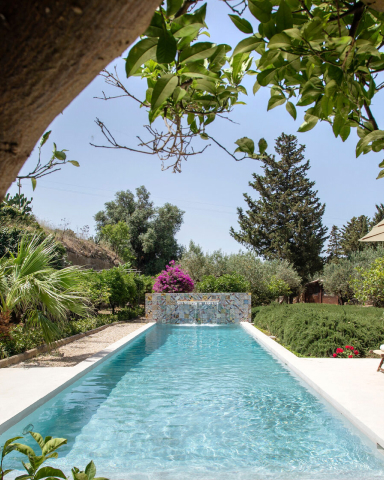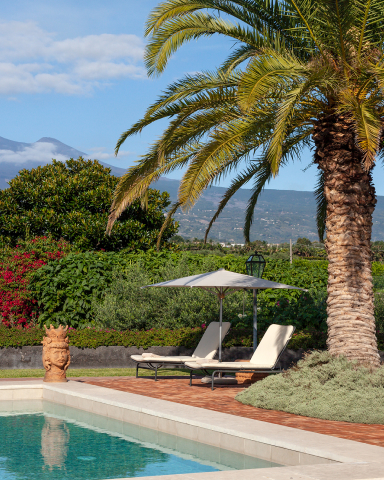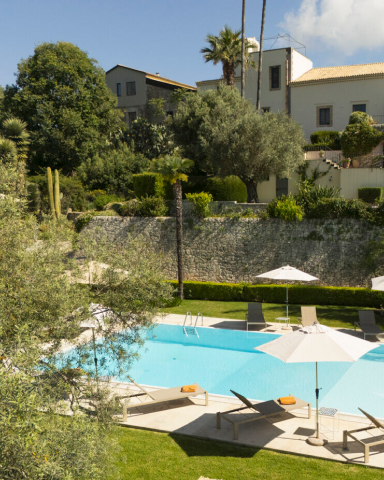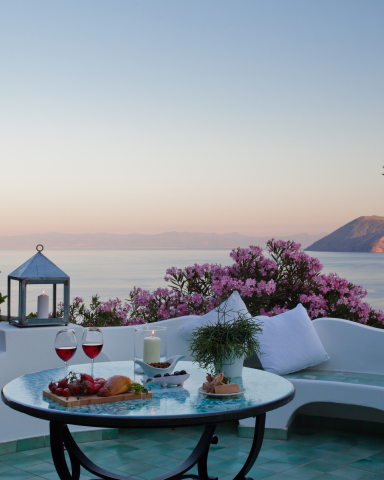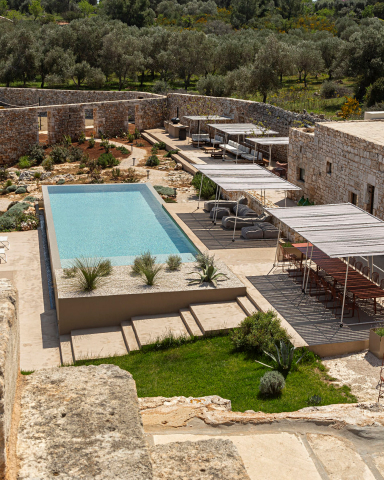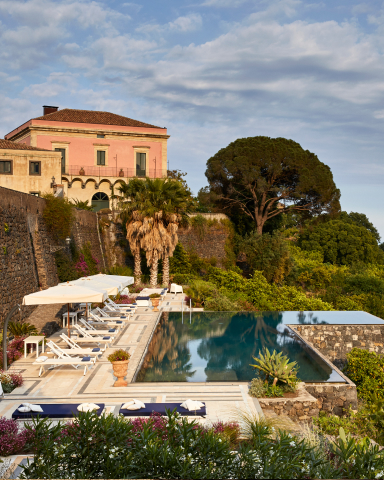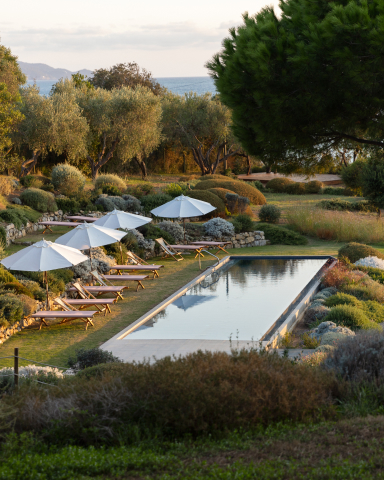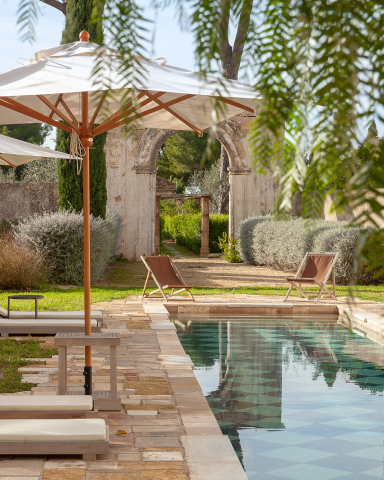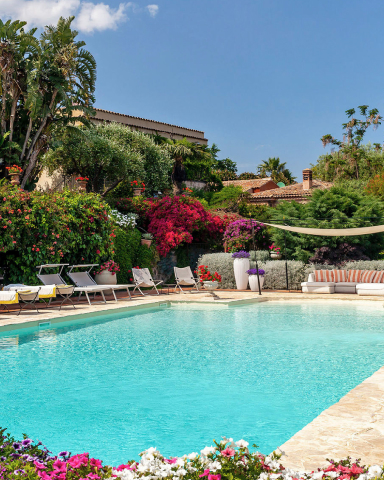What to Do in Palermo: The Complete Guide to Sicily's Captivating Capital

25 Best Things to Do in Palermo: Complete List
Here are the 25 must-do experiences that showcase the very best of Palermo, from world-famous monuments to hidden local gems:
Historic Monuments & Architecture
- Palatine Chapel (Cappella Palatina) - Europe's most stunning Byzantine mosaic masterpiece
- Palermo Cathedral - Climb the bell tower for panoramic city views
- Norman Palace (Palazzo dei Normanni) - Sicily's ancient royal residence
- Quattro Canti - Baroque intersection known as the "Theatre of the Sun"
- La Martorana Church - Exquisite medieval Byzantine mosaics
- Chiesa di San Cataldo - Iconic red domes of Arab-Norman architecture
- Monreale Cathedral - Day trip to see the world's largest Byzantine mosaic collection
Churches & Religious Sites
- Chiesa di San Giuseppe dei Teatini - Ornate Baroque interior with stunning frescoes
- Casa Professa (Chiesa del Gesù) - Jesuit masterpiece with elaborate decorations
- Basilica di San Francesco d'Assisi - Gothic-Romanesque architecture in La Kalsa
- Basilica della Magione - Sicily's last authentic Arab-Norman church
- Santa Maria dello Spasimo - Atmospheric ruins with cultural events
Markets & Street Food Experiences
- Ballarò Market - Ancient Arabic market with authentic street food
- Capo Market - Morning market experience with local specialities
- Vucciria Market - Historic market turned vibrant nightlife district
- Street Food Tour - Sample panelle, arancini, and sfincione
- Borgo Vecchio Market - Fresh seafood market experience
Museums & Cultural Sites
- Regional Archaeological Museum - Sicily's ancient treasures from major sites
- Palazzo Abatellis Regional Art Gallery - Medieval and Renaissance masterpieces
- Oratorio di San Lorenzo - Giacomo Serpotta's sculptural masterpiece
- Oratorio di Santa Cita - Exquisite 18th-century stucco decorations
- Teatro Massimo - Europe's third-largest opera house tours
Unique Experiences & Views
- Mura delle Cattive Promenade - Panoramic sea views from ancient walls
- La Cala Marina - Waterfront dining and sunset aperitivos
- Palazzo Steri - Former Spanish Inquisition headquarters with fascinating history
Each of these experiences offers a different perspective on Palermo's rich cultural tapestry, from Byzantine art to Arabic influences, Norman grandeur to contemporary Sicilian life.

Why Palermo Should Be on Your Sicily Itinerary
Palermo is raw, gritty, and beautiful—very different to cities across mainland Italy. This captivating contradiction makes it one of Europe's most fascinating urban destinations. The city's 2,800-year history has created a unique cultural melting pot where Byzantine mosaics coexist with Moorish architecture, Norman palaces stand alongside Baroque churches, and ancient street markets buzz with modern life.
What Makes Palermo Special
Architectural Diversity: Palermo showcases over 15 centuries of architectural evolution, from Arab-Norman masterpieces to Liberty-style buildings. The city's UNESCO World Heritage Arab-Norman sites alone make it worth visiting.
Culinary Capital: Home to some of Italy's most distinctive street food, Palermo offers culinary experiences you won't find elsewhere. From panelle (chickpea fritters) to arancini, the city's food culture reflects its multicultural history.
Living History: Unlike museum cities, Palermo is vibrantly alive. Its historic markets, traditional neighbourhoods, and local customs provide authentic glimpses into Sicilian life.
Strategic Location: Perfectly positioned for exploring Sicily, Palermo serves as an ideal base for discovering the island's treasures, from ancient temples to coastal villages.
Top Historical Attractions in Palermo
The Norman Palace (Palazzo dei Normanni) and Palatine Chapel
Home to Sicily's regional parliament, this venerable palace dates back to the 9th century and represents one of Europe's most ancient royal residences. The true jewel within the palace is the Palatine Chapel (Cappella Palatina), completed in 1142 and considered one of Europe's most significant artistic treasures.
What to See:
- Stunning Byzantine mosaics covering walls and ceiling
- Intricate Islamic geometric patterns
- Norman royal apartments
- Historical chambers and courtyards
Practical Information:
- Advance booking essential
- Audio guides available
- Allow 2-3 hours for full exploration
- Photography restrictions apply in the chapel
Palermo Cathedral (Cattedrale di Palermo)
The Cattedrale di Palermo showcases a mix of architectural styles, including Norman, Gothic, and Baroque, creating a fascinating visual timeline of the city's history. The cathedral's façade represents over 1,500 years of architectural evolution.
Highlights:
- Climb the bell tower for panoramic city views
- Explore the royal tombs including Emperor Frederick II
- Admire the mix of architectural styles
- Visit the treasury with its precious artefacts
Visitor Tips:
- Best photographed in morning light
- Rooftop access requires separate ticket
- Modest dress code enforced
- Combined tickets available with other sites
Quattro Canti (Four Corners)
The baroque intersection of Corso Vittorio Emanuele and Via Maqueda represents Palermo's historic heart. Known as "Il Teatro del Sole" (Theatre of the Sun), one façade is always illuminated throughout the day, creating a constantly changing urban stage.
Notable Features:
- Four identical baroque façades from 1611
- Represents the four seasons, Spanish kings, and patron saints
- Perfect starting point for exploring the historic centre
- Excellent for photography at any time of day
La Martorana (Chiesa di Santa Maria dell'Ammiraglio)
The Martorana Church's name is a tribute to the founder of the Benedictine convent, Eloisa Martorana, who inherited the church in 1453. This 12th-century church showcases the finest examples of Byzantine art in Sicily.
Must-See Elements:
- Original medieval mosaics depicting Christ and the Apostles
- Unique baroque and Norman architectural blend
- Historic significance as a bridge between Eastern and Western Christianity
- Beautiful bell tower with Arab-Norman styling

Palermo's Historic Markets and Street Food
The Four Historic Markets
Palermo's Arabic heritage markets offer some of the most authentic cultural experiences in the city. Each market has its own character and specialities.
Ballarò Market
The vibrant Ballarò Market is a bustling hub of food, culture, and history, where you can sample local street food and shop for unique souvenirs. Probably the oldest and most atmospheric of Palermo's markets.
What to Experience:
- Fresh seafood delivered by local fishermen
- Seasonal fruits and vegetables
- Traditional street food vendors
- Local spices and Arabic influences
Vucciria Market
Once Palermo's main market, Vucciria has transformed into a vibrant nightlife destination while maintaining its daytime charm. The area represents quintessential Palermitan atmosphere.
Capo Market
Perfect for morning visits, Capo Market offers the most authentic local shopping experience with fewer tourists and the best street food selections.
Borgo Vecchio Market
The newest of the four markets, focusing mainly on fresh fish and seafood, reflecting Palermo's strong maritime traditions.
Essential Palermo Street Food
Must-Try Specialities:
- Panelle: Chickpea fritters served in bread with lemon and salt
- Arancini: Stuffed rice balls with various fillings
- Pane con la milza: Traditional spleen sandwich (for adventurous eaters)
- Sfincione: Sicilian-style pizza with onions, anchovies, and caciocavallo cheese
- Cannoli: Sweet ricotta-filled pastries
- Granita: Sicilian shaved ice dessert, perfect for hot days
Three Perfect Palermo Itineraries
Itinerary 1: Norman and Baroque Palermo (Full Day)
Morning (9:00 AM - 12:30 PM):
- Start at Quattro Canti for orientation and photos
- Visit Chiesa di San Giuseppe dei Teatini for baroque splendour
- Explore Piazza Pretoria and the "Fountain of Shame"
- Discover La Martorana's Byzantine mosaics
- Admire Chiesa di San Cataldo's distinctive red domes
Lunch Break: Traditional Sicilian lunch near Ballarò Market
Afternoon (2:00 PM - 6:00 PM): 6. Explore the atmospheric Ballarò Market 7. Visit Casa Professa (Chiesa del Gesù) for baroque masterpieces 8. Walk along historic Corso Vittorio Emanuele 9. Tour Palermo Cathedral and climb the bell tower 10. End at Norman Palace and Palatine Chapel
Evening: Aperitivo at a rooftop bar with cathedral views
Itinerary 2: La Kalsa Historic Quarter (Half Day)
Morning/Afternoon (9:00 AM - 2:00 PM):
- Begin at Basilica di San Francesco d'Assisi
- Marvel at Oratorio di San Lorenzo's sculptural masterpieces
- Explore imposing Palazzo Steri and its Inquisition history
- Walk through Porta Felice to the sea
- Stroll along Mura delle Cattive panoramic promenade
- Visit Regional Art Gallery at Palazzo Abatellis
- Discover Santa Maria dello Spasimo's atmospheric ruins
- End at Basilica della Magione, Sicily's last true Arab-Norman church
Perfect for: History enthusiasts and architecture lovers
Itinerary 3: Markets and Marina (Half Day)
Morning (8:00 AM - 1:00 PM):
- Start early at vibrant Capo Market for breakfast
- Sample authentic street food and local specialities
- Admire Teatro Massimo, Europe's third-largest opera house
- Explore artisanal shops around Piazza Olivella
- Visit Regional Archaeological Museum for ancient treasures
- Discover Oratorio di Santa Cita's exquisite stucco work
- Experience atmospheric Vucciria Market
- End with refreshments at La Cala Marina
Perfect for: Food lovers and cultural immersion seekers
Cultural Experiences and Museums
Regional Archaeological Museum Salinas
Housed in a beautifully restored ex-convent, this museum showcases Sicily's rich ancient history with artefacts from major archaeological sites including Selinunte, Solunto, and Himera.
Palazzo Abatellis Regional Art Gallery
This 15th-century palace houses Sicily's premier art collection, including Francesco Laurana's sculpture of Eleanor of Aragon and other medieval and Renaissance masterpieces.
Teatro Massimo Opera House
Europe's third-largest opera house offers guided tours showcasing Liberty-style frescoes, elegant salons, and the spectacular auditorium. Evening performances provide unforgettable cultural experiences.
Oratorio di San Lorenzo and Santa Cita
Both oratories feature masterpieces by Giacomo Serpotta, Palermo's greatest sculptor, whose 18th-century stucco work represents the pinnacle of decorative art.
Best Neighbourhoods to Explore
Historic Centre (Centro Storico)
The UNESCO-listed historic centre contains most major attractions within walking distance. Narrow medieval streets reveal hidden churches, baroque palaces, and traditional shops.
La Kalsa
Once the Arab quarter, La Kalsa retains its medieval atmosphere while offering excellent restaurants, galleries, and nightlife. The neighbourhood perfectly balances history with modern amenities.
Vucciria District
Traditional market area transformed into a vibrant nightlife hub. Daytime exploration reveals authentic local life, while evenings bring bustling bars and restaurants.
New Town (Città Nuova)
North of the historic centre, this area features Liberty-style architecture, upscale shopping along Via Libertà, and excellent restaurants serving modern Sicilian cuisine.
Where to Stay Near Palermo
Day Trips from Palermo
Monreale Cathedral
Just 8km from Palermo, this Norman cathedral features the world's largest collection of Byzantine mosaics. The stunning golden interior and panoramic views over Palermo make this an essential half-day trip.
Cefalù
This picturesque coastal town combines beautiful beaches with a magnificent Norman cathedral. Located 70km east of Palermo, Cefalù offers perfect relief from city exploration.
Segesta Archaeological Site
One of Sicily's most impressive ancient Greek sites, featuring a perfectly preserved 5th-century BC temple and an ancient theatre with spectacular valley views.
Marsala and the Egadi Islands
Explore Sicily's wine capital and take ferry trips to the pristine Egadi Islands for crystal-clear waters and peaceful Mediterranean atmosphere.
Practical Information for Visiting Palermo
Getting Around Palermo
Walking: The historic centre is compact and best explored on foot. Most major attractions lie within a 1km radius of Quattro Canti.
Public Transport: Efficient bus network connects all major areas. Purchase tickets from tabacchi shops or automated machines.
Taxis: Readily available but agree on fares beforehand or ensure meters are running.
Car Rental: Not recommended for city exploration due to traffic and limited parking, but useful for regional day trips.
Best Time to Visit
Spring (March-May): Ideal temperatures, fewer crowds, and beautiful flowering landscapes. Perfect for walking tours and outdoor exploration.
Summer (June-August): Hot temperatures but vibrant atmosphere. Early morning and late afternoon exploration recommended.
Autumn (September-November): Comfortable temperatures, cultural events, and excellent light for photography.
Winter (December-February): Mild climate perfect for cultural attractions, fewer tourists, and authentic local experiences.
Essential Tips
Dress Code: Modest clothing required for religious sites. Shoulders and knees must be covered.
Language: Italian is primary language, but some English spoken in tourist areas. Learning basic Italian phrases enhances the experience.
Currency: Euro only. Credit cards widely accepted, but carry cash for markets and small establishments.
Safety: Palermo is generally safe for tourists. Exercise normal urban caution and be aware of pickpockets in crowded areas.
Opening Hours: Many attractions close for lunch (1:00-3:00 PM) and on Mondays. Churches often close during mass times.
Frequently Asked Questions

We're Villa Matchmakers
Because our local experts have personally visited each of our destinations, we know exactly what makes them special. Tell us what your ultimate villa holiday looks like, and allow us take care of the rest.
